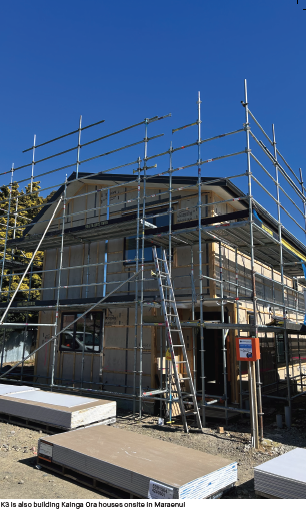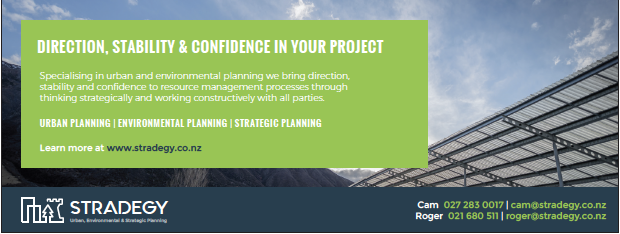Throughout the years central government have been gradually incorporating legislation into the planning framework that has directed local authorities to consider specific areas for housing developments and incorporating these into the rule frameworks of their district plans.
A key piece of legislative framework is the National Policy Statement on Urban Development (NPS-UD). The NPS-UD was released in December 2020 and formed part of the urban planning focus of the Urban Growth Agenda.
As part of the NPS-UD, Councils were directed to remove overly restrictive planning rules and plan for growth, both up and out, which in turn would enable greater height and density in appropriate areas of high demand and access.
With specific regard to the Hastings District, this has been given effect through the removal of the need to provide on-site carparking, the release of the Residential Intensification Guide in 2020, and the recent notification of proposed District Plan Change 5. Plan Change 5 will provide for medium to higher density residential developments, known as Comprehensive Residential Developments (CRD) in areas which are within or partially within a 400-600m radius of public transport, open spaces and commercial zones.
If a CRD meets the above criteria of Plan Change 5 and the applicable performance standards are met, then it triggers a Non-Notified resource consent. The key change here is the incorporation of the application being non-notified from the start means that consultation with the community is not required.
Although Plan Change 5 is not yet ‘operative’, this form of development has already been formally introduced to Council via the resource consent process. It may come as no real surprise that the incorporation of these developments has been met with some concern and pushback from local communities, evidenced by recent media coverage of proposed housing developments in Ada Street and Southland Road.
Similar opposition has also been voiced in Napier with recent medium density developments on the City’s commercial fringe attracting opposition from local residents.
The challenge to provide a housing solution results in tension between housing providers, developers, Council and community groups and this will be the testing ground for how Plan Change 5 will sit in the real world when it comes into effect. So, what is a solution here?
From what we understand, a key concern is the design of these developments, how they relate to the existing character of the area, and how well they fit into the resultant areas. These concerns all fall within the conceptual umbrella of urban design. Which is what many would refer to as a ‘grey area’ that is open to subjectivity, interpretation and opinion, that are not easily reflected in rules or easily quantified when exercising discretion in decision making.
Urban design is no recent concept, however, it is becoming more and more crucial to incorporate good urban design into these developments as we push for denser towns and cities, to provide for high quality living environments both for current and future generations. There are multiple qualities which fall within urban design, however as stated in the urban design protocol (2005), the key design qualities are limited to seven and include:
■ Context
■ Character
■ Choice
■ Connections
■ Creativity
■ Custodianship
■ Collaboration
It is noted that urban design is very subjective, and that different individuals will have different opinions about how a development fits within the above qualities. However, when it comes to proposed developments, this subjectiveness can be resolved, particularly when the development meets the CRD criteria of Plan Change 5, through consultation between developers and the Council.
The end outcome here is that there are clear understandings between both parties about how the development has incorporated good urban design qualities and the changes which have been made before an application for resource consent is even lodged with Council. What this consultation process looks like will need to be worked through between developers and Council.
Having Council put in place a defined process of urban design consultation with potential developers is a good start. The discrepancies between developers, Councils and community groups are creating a somewhat ugly phase in the process of providing denser towns and cities.
Our combined vision moving forward, needs to be that we provide these developments in a timely manner but that they also provide good quality environments and meet people’s needs. Through the inclusion of good urban design and appropriate consultation between parties where necessary, we believe this can be achieved and will also set a pathway for quality, higher density towns and cities in the future.

Matthew Morley BEP – Intermediate Planner
Matt graduated with a Bachelor’s degree in environmental planning specialising in Society, Politics, and the Environment. With an active interest in the outdoors and surfing, Matt is passionate about achieving good outcomes for both natural and urban environments and draws on his fundamental values to assist clients in achieving high value outcomes. Focused mainly on urban land use planning, Matt has a good understanding of project inputs, and through good communication skills, works well with project teams and Council Officers during both the application preparation and processing stages of a project.



